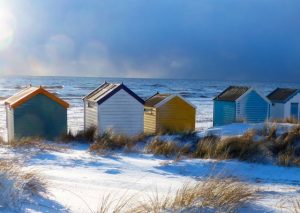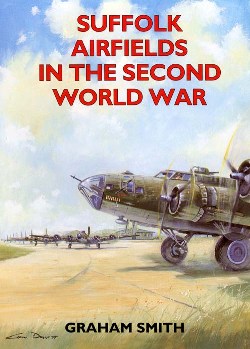
In SUFFOLK AIRFIELDS IN THE SECOND WORLD WAR (Countryside Books £12.95) author GRAHAM SMITH recalls the part the airfields played during the war.
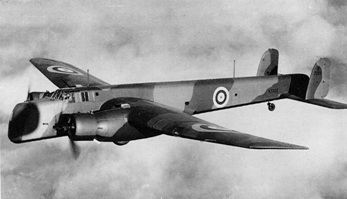
It has often been said that during the Second World War, Britain tended to resemble a gigantic aircraft carrier. Of no county was this image more true than Suffolk.
.jpg)
Bomber Command, Fighter Command and the Eighth Air Force of the USAAF. The very names conjure up memories of the last war; of East Coast Airfields; of bombing raids over Germany and Northern Europe and of the ground crews desperately trying to repair and re-fuel battle-scarred aircraft.
.jpg)
By the end of the last war Suffolk had no fewer than 32 airfields, all but five built after 1939. Anything up to six trains a day ran to East Anglia bringing rubble from bombed-out London to use as hardcore for runways and ancillary buildings. In the middle of 1942 the first parties of American Engineers arrived to help build some of the American airfields – such as Debach, Eye and Raydon. An overall workforce of 60,000 men were said to be engaged on airfield construction – each airfield costing bout £900,000 to build.
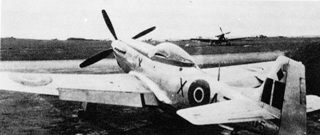
Author Graham Smith gives the history of each airfield – RAF or USAAF – and highlights the major wartime operations and the many and varied aircraft that comprised the operational squadrons. Numbered among them are the Glenheim, Wellington, Stirling, Lancaster, Liberator, Flying Fortress, Spitfire, Hurricane, Thunderbolt, Mustang and the Sunderland Flying Boat.
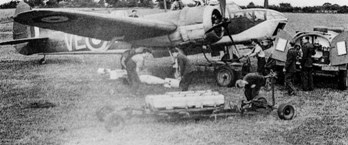
He also tells of the men and women of the R.A.F. and the men of the USAAF who were stationed in Suffolk and the local civilians who worked alongside them. At this time bonds of friendship were formed which last to the present day.
_esdng5e3afxc4zusjwgbvj.jpg)
The young airmen who flew from the airfields of Suffolk made an immense contribution to the final defeat of the Third Reich, as Allied bombers and fighters flew increasingly larger raids across the North Sea and into the dangerous, smoke-filled skies of occupied Europe.
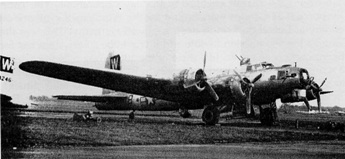
This action-packed book will appeal equally to aviation enthusiasts and to all those who remember or have heard about those exciting and terrifying days when the skies over Suffolk never ceased to throb with the drone of departing and returning aircraft.
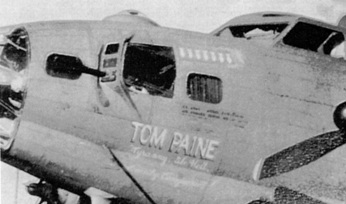
GRAHAM SMITH was born in Ebbw Vale, South Wales and is an aviation enthusiast. He served his National Service in the R.A.F. and for the past 40 years has lived in Essex. He is also the author of Heroes of Bomber Command: Suffolk, Norfolk Airfields in the Second World War, Cambridgeshire Airfields in the Second World War and Essex and its Race for the Skies.
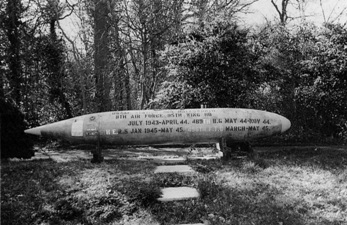
SUFFOLK AIRFIELDS IN THE SECOND WORLD WAR by Graham Smith is published by Countryside Books at £12.95 and is available from all good booksellers, some local garden centres and attractions and direct from the publishers at countrysidebooks.co.uk.
Suffolk Airfields in the Second World War – Excerpts from Chapters
Chapter 1 – Setting the Scene
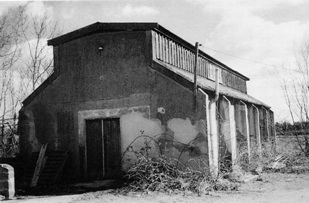
It has often been said that during the Second World War Britain tended to resemble a gigantic aircraft carrier moored just off the north-west coast of Europe. This impression would seem particularly appropriate as far as Suffolk was concerned. It is about 30% smaller in area than Norfolk and yet it contained almost the same number of airfields – 32 compared with 37 – and indeed was planned to have more, but three sites (Assington, Crowfield and Fressingfield) were finally dropped. There was a greater preponderance of heavy bomber stations in Suffolk and the B-17s, B-24s, Wellingtons, Stirlings and Lancasters, all tended to make their presence felt in more ways than their sheer bulk and noise dictated. The very aptly named ‘Friendly Invasion’ of the USAAF during 1942-44 impinged greatly on the life of the county with no less than 19 combat groups operating from its airfields.
Chapter 10 – Framlingham
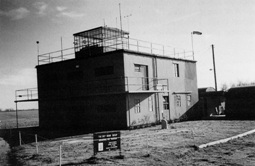
It would be fair to say that no Bomb Group in the 4th Bomb Wing had as stern a baptism of fire as the 390th. Within just five days of becoming operational, and with only two missions under their belts, the crews found themselves engaged in that most torrid operation – Regensburg.
Chapter 19 – Leiston
In January 1944 the first P-51 Group to serve with the Eighty Air Force arrived at Leiston with just 15 aircraft. On 5th February more of the precious aircraft arrived at Leiston and then they were almost immediately grounded whilst a serious fault was investigated. However the 357th developed in the most successful P-51 Group in the whole of the Eighth Air Force.
.jpg)
On their first mission, which was mounted on 11th February 1944, the Group was led by Major James Howard of the 345th of the Ninth Air Force then at Boxted – a most experienced pilot who had only recently (11th January) been awarded the Congressional Medal of Honour. ON this day he led the 41 P-51s on a sweep of Rouen in Siracourt. The next two days were similar missions and one aircraft was lost when it came down in the sea near Clacton though the pilot was rescued. It was during the so-called ‘Big Week’ that the Group pilots came of age. In five days of operations from 20th to 25th February the pilots accounted for 22 enemy aircraft for the loss of four of their own. They were now on their way to great things.
Chapter 29 – Sudbury

Although the Eighth was a young Air Force in more senses than one and although the average age of its aircrews was 21 years, not all were young lads. The 486th had the oldest pilot on operations in the whole of the Eighth – Captain Dick Grace – who, when pressed, admitted to the ripe old age of 46 years! Grace had been a combat pilot in the First World War, a Hollywood stunt flyer, and a ferry pilot. Such was his fame that he almost became a living legend in the Eighth. On Boxing Day he was piloting the lead aircraft of the Group and whilst over Coblenz his aircraft was badly damaged by flak (later 156 holes were counted) and yet he still managed to bring the aircraft back to Sudbury on only two sound engines. He was injured by flak but after a short spell in hospital he was back on operations on 10th January 1945 – his 47th birthday!
